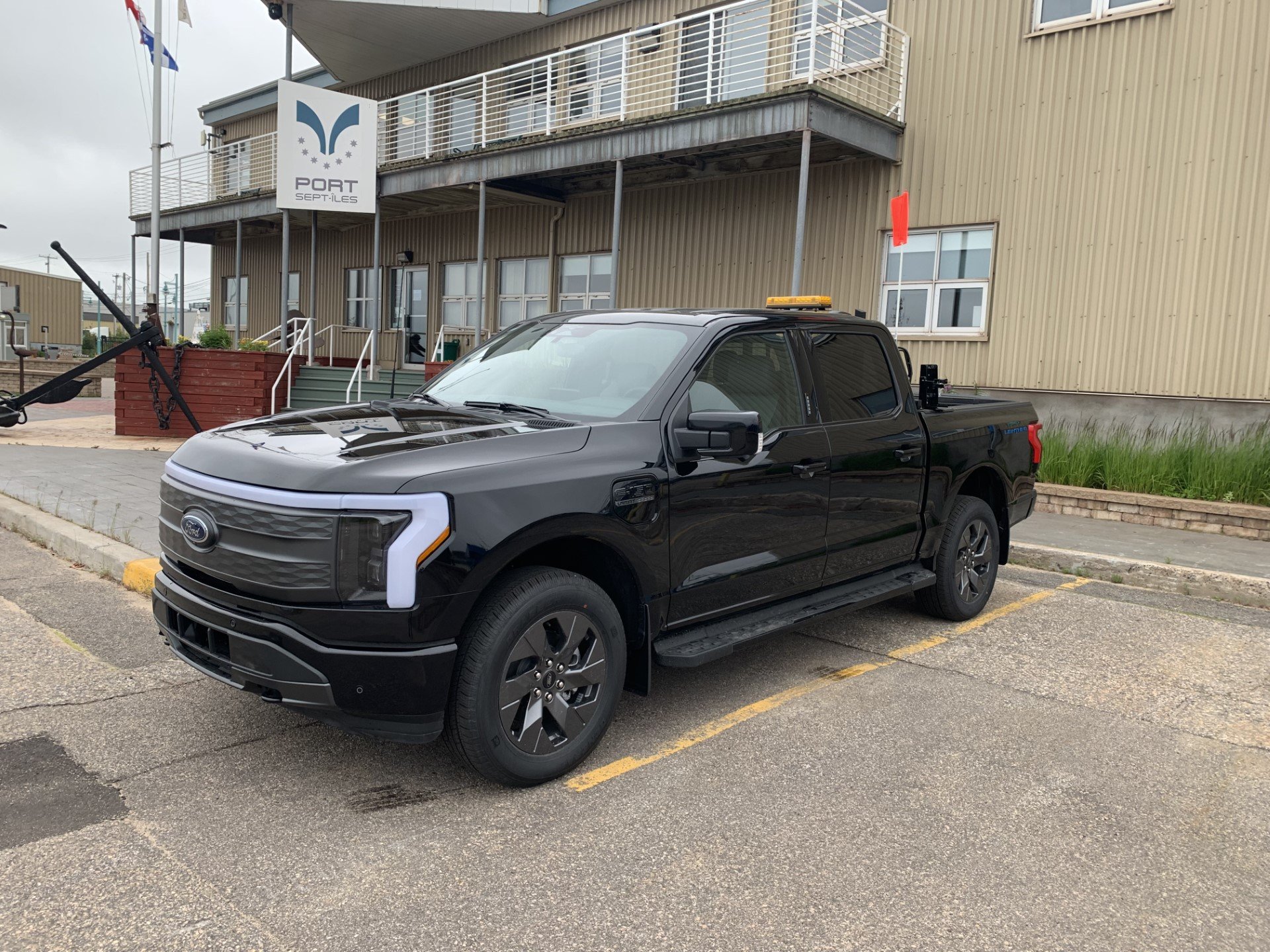The Port of Sept-Îles Goes Electric
|
Project overview: progressive fleet electrification |
|---|
|
Year of implementation: 2013 Number of electric vehicles: 2 all-electric vehicles, 1 hybrid Number of charging stations: 3 GHG emissions saved: 25% less in 2022 |

Project history
Since 2008, the Port of Sept-Îles, North America's leading mineral port, has been a founding member of Green Marine, a voluntary environmental certification program for the North American shipping industry. To obtain this recognition, the Port must demonstrate continuous improvement in its environmental performance on a yearly basis, using conclusive and measurable data.
Fleet electrification is one of the criteria for certification. The subsidies available for the purchase of an EV convinced the organization to take action in 2013.
Stages of fleet electrification at the Port of Sept-Îles:
|
2013 |
Strategic installation of two charging stations Purchase of a plug-in hybrid vehicle (Chevrolet Volt) for use on the Port site: one of the first EVs in Sept-Îles. |
|
2018 |
Installation of a third charging station at the new multi-user terminal |
|
2021-2023 |
Replacement of the Chevrolet Volt by a hybrid SUV (Toyota Highlander) Acquisition of two EVs (Hyundai Ioniq and Ford Lightning) |
The Port of Sept-Îles assessed its needs before acquiring EVs. Each EV has a specific purpose. The light vehicle is used for employees' daily commutes, the truck is dedicated to occasional trips and employees working in town, while the hybrid vehicle is used for terminal patrols. In addition, employee carpooling has helped optimize vehicle use.
Tips for a successful electrification project
- Taking advantage of existing subsidies can reduce costs and convince the organization of the relevance of acquiring an EV.
- Planning a long-term transition has many advantages:
- Allowing employees to adapt and implement lasting changes in habits
- Ensuring that vehicles meet needs
- Amortize costs
- Being strategic about the location of charging stations.
- Keeping a gasoline-powered vehicle can be reassuring for the organization and its employees, especially at the beginning of the transition.
